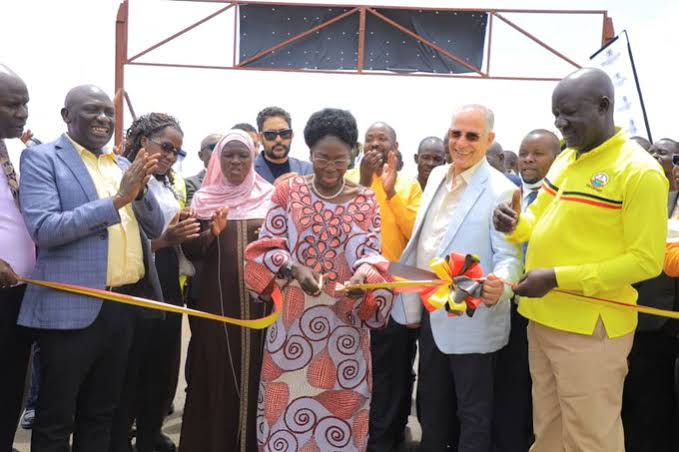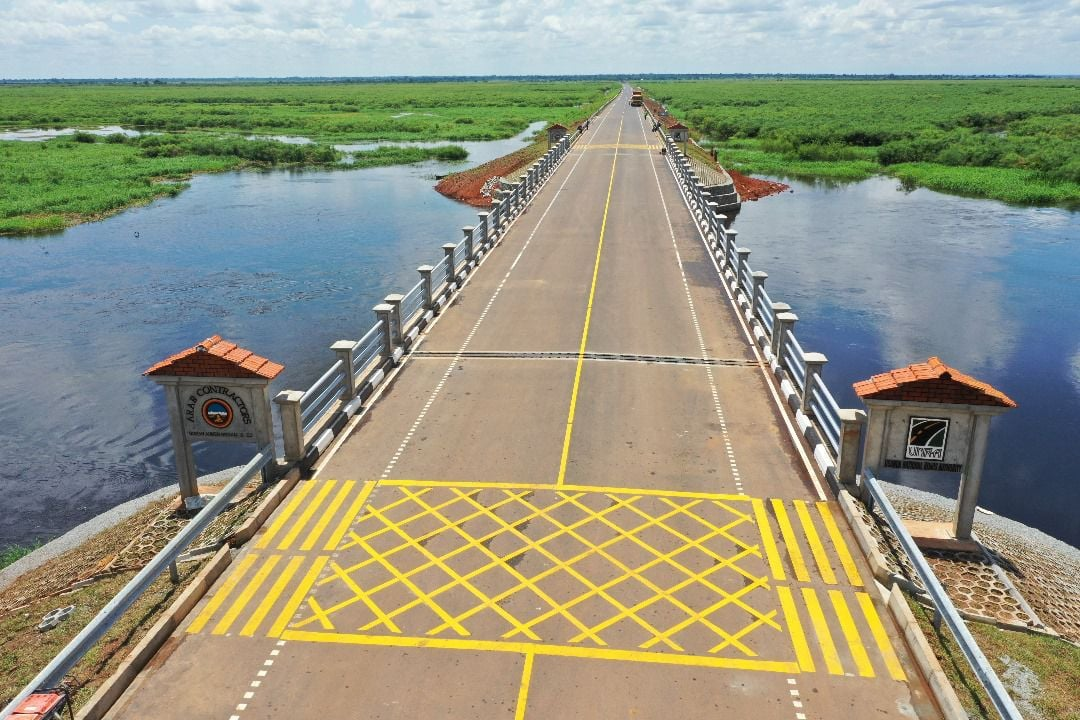For decades, crossing the River Mpologoma was more than just a logistical challenge—it was a life-threatening ordeal. Without a bridge, residents of Kaliro and Pallisa districts risked their lives every day as they navigated the treacherous Saaka Swamp in fragile canoes. Access to markets, schools, hospitals, and visits to relatives on the other side of the river came at a very high price.
Today, that dangerous chapter has finally closed.
Rt. Hon. Rebecca Kadaga, First Deputy Prime Minister and Minister for East African Community Affairs, officially commissioned the Saaka Bridge on behalf of President Yoweri Kaguta Museveni—11 months ahead of schedule. This rare feat in infrastructure delivery is being celebrated not just for its speed, but also for the profound human impact it has made.
“Have just commissioned the Kumi and Pallisa Town roads, now heading to Saaka Bridge to commission it as well,” Kadaga wrote on X (formerly Twitter), describing the new bridge as “a game-changer for the people of Eastern Uganda.”

Funded entirely by the Government of Uganda and constructed by Arab Contractors, the Saaka Bridge was built under a Design and Build scheme that was signed in May 2022. Construction began in July 2022 and was originally scheduled for completion in January 2025. However, by February 13, 2024, the bridge was complete—nearly a year ahead of schedule.
Stretching 64 meters across the Saaka Swamp (which spans 3.5 km and includes 0.5 km of approach roads on each side), the bridge now links Namwiwa Sub-County in Kaliro with Kasodo Sub-County in Pallisa. It offers a durable, all-weather connection over the River Mpologoma, whose basin feeds into Lake Kyoga.
Beyond infrastructure, the bridge symbolizes the end of a daily gamble. In the past, dangerous canoe crossings during the rainy season resulted in capsized vessels, leaving children missing school, pregnant women unable to reach health facilities, and farmers unable to transport their perishable goods. Tragically, some lives were lost.
These challenges were not merely inconveniences but manifestations of deeper structural inequalities. The lack of safe infrastructure reinforced poverty and insecurity. With the Saaka Bridge, however, thousands of people now enjoy restored dignity, safety, and improved economic access.
This new bridge is part of a broader initiative under the National Roads Development and Maintenance Programme (NRDMP), which is transforming eastern Uganda. Alongside the bridge, town roads in Pallisa (7.5 km) and Kumi (12.2 km) have been upgraded, marking a significant step toward regional economic revitalization.
Safer travel is now assured, and communities are no longer dependent on precarious water crossings. Improved roads have led to lower transport costs—fewer vehicle breakdowns and more efficient fuel use. Additionally, the region is witnessing tangible economic growth. New hotels and lodges are emerging to cater to the increasing influx of tourists and business travelers, while agricultural trade is booming, particularly for commodities like rice, groundnuts, and livestock.
The project has also boosted local employment during and after construction, raising incomes and enhancing household stability. Furthermore, the installation of streetlights along the new town roads has improved security, enabling safer nighttime movement and reducing crime.
The Saaka Bridge now integrates seamlessly with Uganda’s major national road networks—including the Soroti–Mbale, Tirinyi–Pallisa–Kumi, and Pallisa–Kamonkoli roads. This enhanced connectivity not only improves access to local and regional markets but also strengthens Uganda’s eastern corridor, positioning it as a vital hub for trade, agriculture, and tourism.
With a design lifespan of 120 years, the Saaka Bridge is built to serve today’s needs and those of future generations. Its durability promises long-term benefits in trade, transport, and community cohesion.
Ultimately, the story of the Saaka Bridge is not just about rapid construction or engineering excellence—it is a testament to the lives that have been uplifted when infrastructure finally meets human needs. Behind every road and every bridge are people who dream, struggle, trade, grow, and hope for a better tomorrow.


